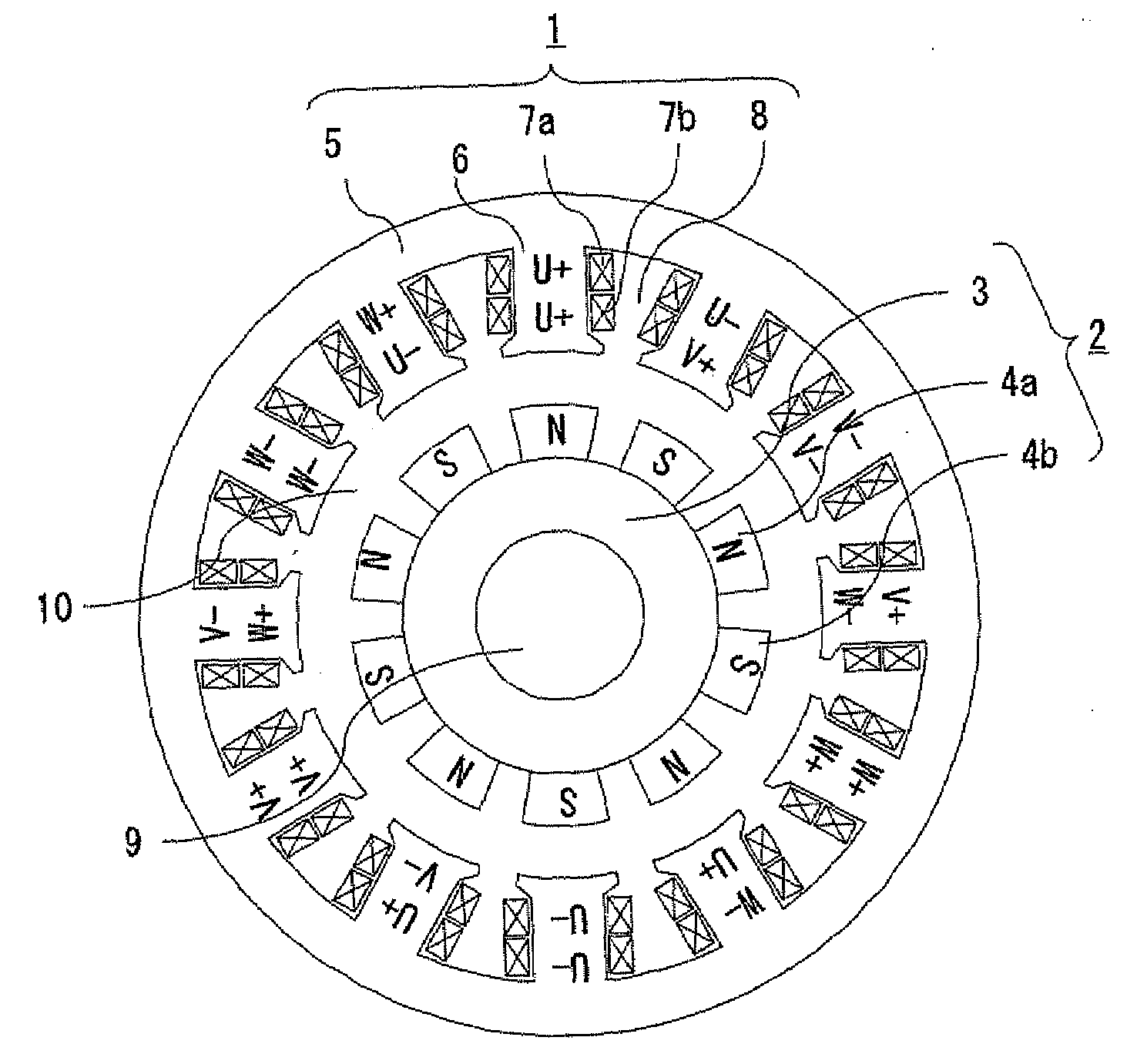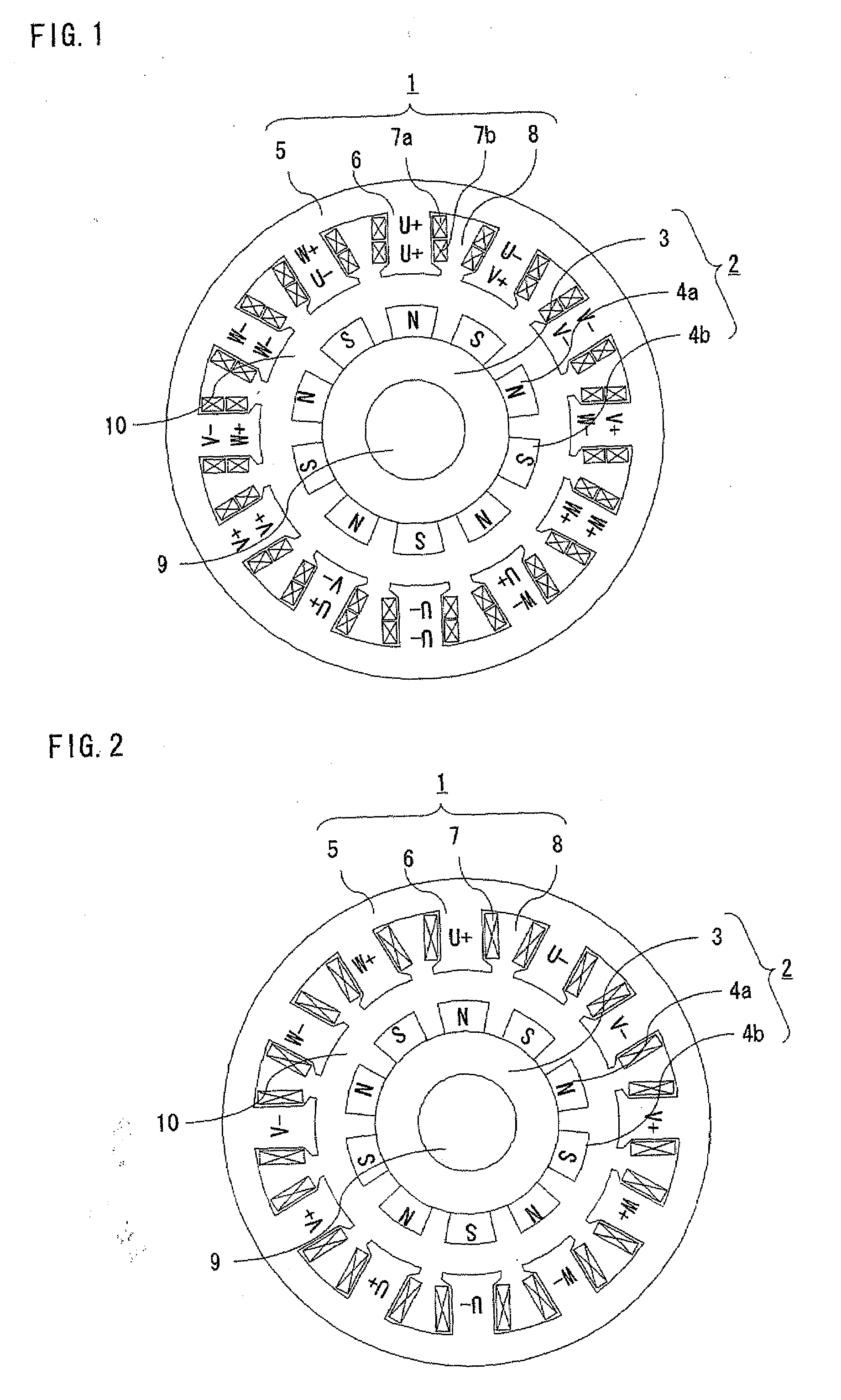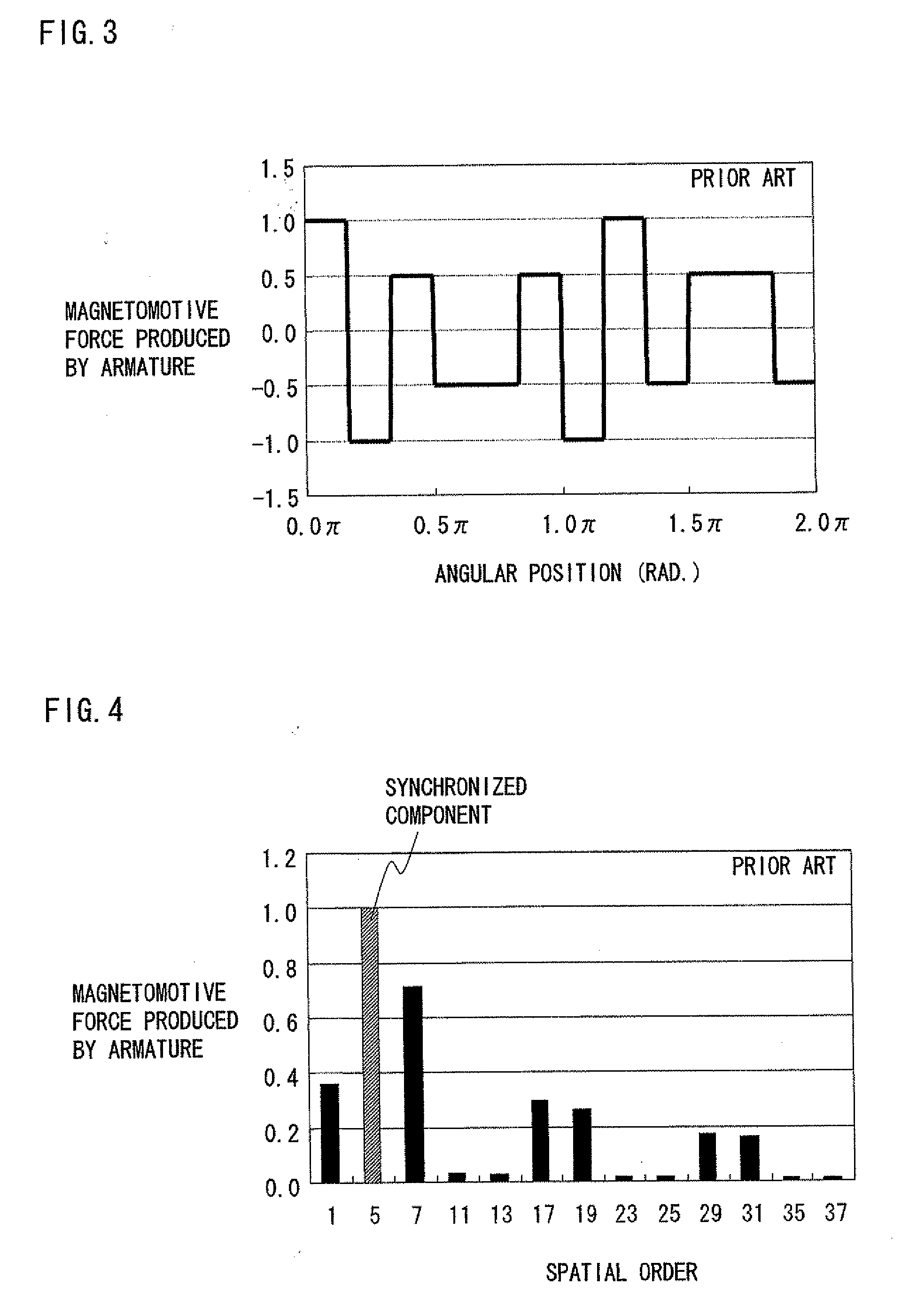Electric machine
a technology of electric machines and field poles, applied in the field of electric machines, can solve the problems of reducing motor efficiency, demagnetizing the field pole magnet, and eddy current loss occurring in the field pole unit constitute an appreciable part of the total energy loss, and achieve the effect of reducing eddy current loss
- Summary
- Abstract
- Description
- Claims
- Application Information
AI Technical Summary
Benefits of technology
Problems solved by technology
Method used
Image
Examples
first embodiment
[0032]FIG. 1 is a sectional diagram showing the structure of an electric machine according to a first embodiment of the invention. This electric machine is a 3-phase, 10-pole, 12-tooth rotating electric machine including an armature 1 and a field pole unit 2 which are disposed relatively rotatably by means of retaining devices, such as bearings, with a magnetic gap 10 created in between. The field pole unit 2 includes a field pole core 3 mounted on a shaft 9 and five pairs (ten in total) of north-pole (N-pole) permanent magnets 4a and south-pole (S-pole) permanent magnets 4b, which may be referred to simply as the permanent magnets 4 collectively, attached to the field pole core 3. While each of the permanent magnets 4a, 4b constitutes one magnetic pole as illustrated in FIG. 1, the electric machine is not specifically limited to this example in terms of permanent magnet configuration. Also, although the permanent magnets 4a, 4b are arranged on an outer surface of the field pole cor...
second embodiment
[0046]FIG. 9 is a sectional diagram showing the structure of an electric machine according to a second embodiment of the invention, in which elements identical or similar to those of the first embodiment are designated by like reference numbers. While the above-described electric machine of the first embodiment is a 10-pole, 12-tooth rotating electric machine, the electric machine of the second embodiment shown in FIG. 9 is a 3-phase, 20-pole, 24-tooth rotating electric machine. If the number of poles “P” and the number of teeth “Q” are expressed by P=5n and Q=6n, respectively, where “n” is any even number, the coils 7a, 7b should be wound around the successive teeth 6 with phase relationships and winding polarities arranged in the order of U+ / U+, U− / V+, V− / V−, W− / V+, W+ / W+, W− / U+, U− / U−, U+ / V−, V+ / V+, W+ / V−, W− / W− and W+ / U− in the clockwise direction from top as illustrated in FIG. 9, which is the same as shown in FIG. 1 but repeated twice.
[0047]In the structure of this embodiment,...
third embodiment
[0048]FIG. 11 is a sectional diagram showing the structure of an electric machine according to a third embodiment of the invention which is a 3-phase, 14-pole, 12-tooth rotating electric machine, in which elements identical or similar to those of the foregoing embodiments are designated by like reference numbers. Although the rotating electric machine of this embodiment is a 14-pole type, an armature 1 has the same structure as that of the first embodiment. In this rotating electric machine, a 7th-order spatial harmonic component becomes as a synchronized component. Stated more generally, the synchronized component is a (7n / 2)th-order spatial harmonic component in this embodiment if the number of poles “P” and the number of teeth “Q” are expressed by P=7n and Q=6n, respectively, where “n” is any even number.
[0049]FIG. 12 is a graph showing components of individual orders of magnetomotive forces produced by the armature 1 of the third embodiment together with the components of indivi...
PUM
 Login to View More
Login to View More Abstract
Description
Claims
Application Information
 Login to View More
Login to View More - R&D
- Intellectual Property
- Life Sciences
- Materials
- Tech Scout
- Unparalleled Data Quality
- Higher Quality Content
- 60% Fewer Hallucinations
Browse by: Latest US Patents, China's latest patents, Technical Efficacy Thesaurus, Application Domain, Technology Topic, Popular Technical Reports.
© 2025 PatSnap. All rights reserved.Legal|Privacy policy|Modern Slavery Act Transparency Statement|Sitemap|About US| Contact US: help@patsnap.com



